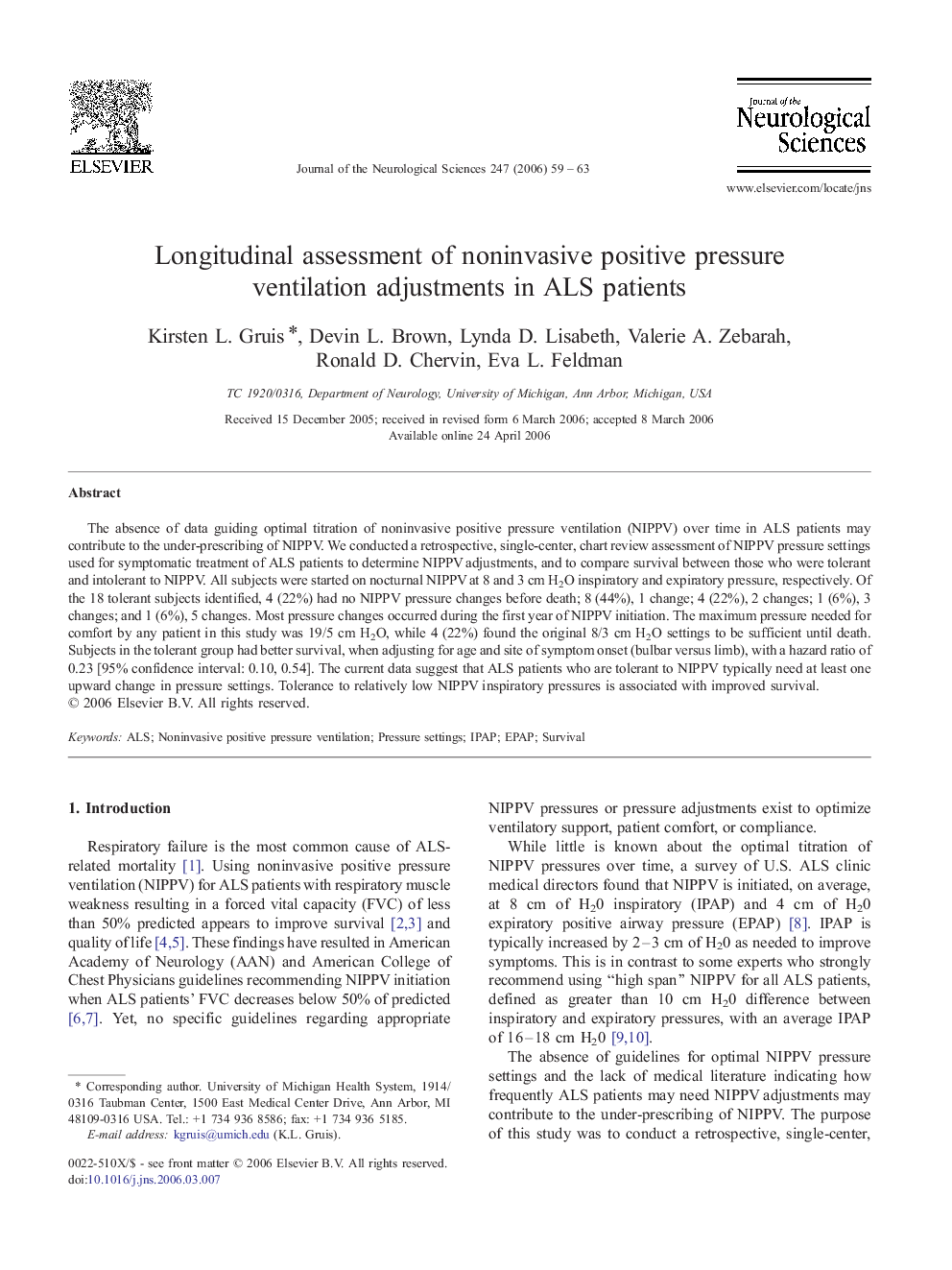| Article ID | Journal | Published Year | Pages | File Type |
|---|---|---|---|---|
| 1916799 | Journal of the Neurological Sciences | 2006 | 5 Pages |
The absence of data guiding optimal titration of noninvasive positive pressure ventilation (NIPPV) over time in ALS patients may contribute to the under-prescribing of NIPPV. We conducted a retrospective, single-center, chart review assessment of NIPPV pressure settings used for symptomatic treatment of ALS patients to determine NIPPV adjustments, and to compare survival between those who were tolerant and intolerant to NIPPV. All subjects were started on nocturnal NIPPV at 8 and 3 cm H2O inspiratory and expiratory pressure, respectively. Of the 18 tolerant subjects identified, 4 (22%) had no NIPPV pressure changes before death; 8 (44%), 1 change; 4 (22%), 2 changes; 1 (6%), 3 changes; and 1 (6%), 5 changes. Most pressure changes occurred during the first year of NIPPV initiation. The maximum pressure needed for comfort by any patient in this study was 19/5 cm H2O, while 4 (22%) found the original 8/3 cm H2O settings to be sufficient until death. Subjects in the tolerant group had better survival, when adjusting for age and site of symptom onset (bulbar versus limb), with a hazard ratio of 0.23 [95% confidence interval: 0.10, 0.54]. The current data suggest that ALS patients who are tolerant to NIPPV typically need at least one upward change in pressure settings. Tolerance to relatively low NIPPV inspiratory pressures is associated with improved survival.
